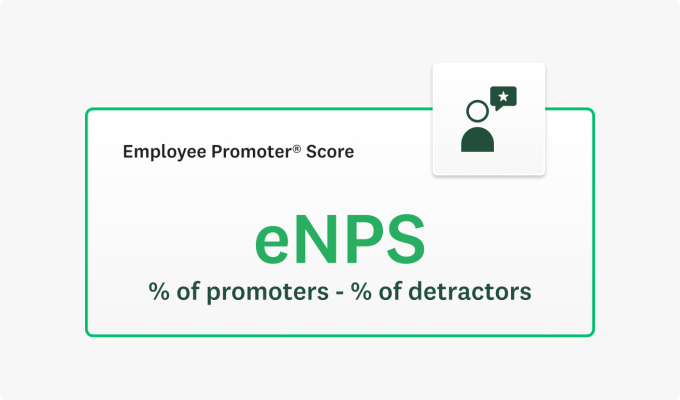10 tips to boost employee happiness for business success
Boost employee happiness to decrease attrition and improve company culture, productivity, and profitability.

Organizations are at a crossroads. Today’s digital tools provide more opportunities to create an engaged workforce than ever before, but recent surveys suggest some businesses are struggling to maintain employee happiness.
But the companies that are getting it right are boasting a workforce that’s happier and more engaged than ever before.
Happy employees are vital for success. They tend to be more productive, engaged, and loyal than their counterparts. But what is employee happiness? Why does it matter? And how can you get it right?
This article explores why employee happiness matters, how to measure it, and provides actionable tips for creating a happier workplace.
What is employee happiness?
Employee happiness is a state of feeling engaged, valued, and fulfilled at work. Importantly, it’s not just about job satisfaction. Instead, employee happiness encompasses overall well-being, emotional fulfillment, and a sense of purpose.
Workplace culture, leadership, and work-life balance each contribute to employee happiness. A Gettysburg College study found that organizations that prioritize a positive culture and foster employees’ growth as well-rounded people perform better than those that don’t.
Businesses prioritizing these factors have happier—and more productive—employees.
How to improve employee happiness (10 tips)
Improving employee happiness can sometimes be challenging. Your strategies depend heavily on your organization’s structure, size, and culture.
However, there are a few tried-and-true strategies managers, leaders, and HR teams can implement. Here are some ways to build a happier workforce and healthy work environment.
1. Foster a positive work environment
The most content employees perceive their workplace as a secure environment where they receive support and respect from their peers. Cultivate a workplace culture that prioritizes collaboration and inclusivity.
Promote teamwork in addressing challenges. Consider implementing team-building activities to enhance relationships within the organization. Employee roundtables, all-hands meetings, and various information-sharing forums are also excellent methods for engaging individuals and reinforcing connections.
2. Recognize and reward achievements
Recognition is a great motivator. Employees who feel their work is valued are more likely to be productive and engaged. They’re also more likely to stay with the company, which means less time and money spent on hiring and onboarding.
Celebrate employees’ wins—big or small! Recognition can be anything from an award to a simple “thank you” message.
3. Offer professional development opportunities
Studies show that today’s employees value professional development highly. This is especially true for Gen Z. As young workers enter the workforce, they’ll be looking for jobs that are truly invested in their growth.
Provide training, workshops, and other development opportunities to help your teammates grow. Managers should also take the time to talk to their employees about their goals. Find out where they would like their careers to go, then work with them to achieve those goals.
4. Provide clear career paths
Employees are happier when they can envision their career path. Helping employees envision their future at your workplace will firm up their commitment and dramatically reduce churn.
Provide sufficient training and resources for employees to succeed on their chosen path. Managers should frequently check in with their teams to see how they progress toward their goals. Also, provide opportunities for employees to network with more experienced individuals inside and outside the organization.
5. Support skill development
In today’s fast-paced workplace, skill development is paramount to success. Encourage employees to learn new skills that will benefit them on the job and empower them to advance in their careers.
Provide digital and in-person skill development to employees who want or need it. This can take the form of free or paid courses. Consider offering tuition reimbursement to employees who take courses or pursue certifications relevant to their jobs.
6. Promote work-life balance
Happy employees have a full life outside of work. Provide your employees with the opportunity to engage in their hobbies and interests. Implement flexible working hours, remote or hybrid arrangements, and options for compressed work weeks.
But wellness happens in the workplace, too. Consider providing wellness initiatives for employees. These might include on-site fitness centers or gym reimbursements, meal plans, and stress management workshops.
7. Offer flexible work schedules
Remote or hybrid work can improve employee satisfaction. Employees who work on their own time and space are generally happier and more engaged. To support remote work, provide remote employees with the necessary tools and technology.
Some employees prefer working in the morning, while others work best at night. In-person offices can offer flexibility options to support those workers. Implement flexible work hours so employees can work on their schedules.
8. Encourage time off and prevent burnout
Sometimes, unhappy employees feel pressure to keep working despite nearing burnout. Encourage them to take the time off they need. To ensure that employees take time off, enforce minimum vacation time requirements. Offer incentives for using vacation time, like additional vacation days or bonuses.
Regularly check in with employees to ensure their workloads are manageable. If you’re a manager or leader, encourage workers to delegate! Delegation is a critical skill for employees to learn as they advance.
9. Implement wellness programs
Gym memberships, mental health resources, and stress management workshops can all help promote employee happiness. Employee assistance programs (EAPs) can also provide counseling and support to those needing it. Some businesses even offer health screenings and wellness workshops to their employees.
10. Promote open communication and feedback
Encourage employees to engage in open, honest dialogue with managers and peers. Companies can identify employee concerns and gather input through regular surveys and feedback sessions. To encourage honesty, try implementing suggestion boxes or anonymous feedback channels.
Moreover, leadership should make an effort to promptly share company news and updates with everyone. Updates can occur via email, at all-hands meetings, or in town halls with the whole company.
Above all, encourage transparent communication between peers and between management and employees. Foster an open-door policy so employees feel safe raising their concerns and giving feedback.
Benefits of having happy employees
Fostering a happy workplace is good for your employees—and your company's success. Happiness is vitally important for everything from customer service to innovation. Here are some of the many benefits of having happy employees.
Increased productivity

Happy employees are about 13% more productive than their counterparts, according to an Oxford study. They’re also more likely to be mentally sharp and innovative, which increases productivity and lays the groundwork for innovation in the workplace.
Happiness is crucial for company culture. Happy employees are also more likely to work harmoniously, fostering a positive and collaborative workplace where people are excited to solve problems together.
Higher employee retention
Businesses with a happy workforce boast greater retention rates. Employees who are happy to show up for work are less likely to look for a new job. Companies with higher morale see lower churn than those with lower morale.
Reduced absenteeism
According to research published in the Journal of Canadian Public Administration, employees who feel happy and engaged at work are likelier to show up than those who don’t. Organizations that prioritize happiness experience less absenteeism than their competitors.
Better customer satisfaction
Happy employees provide better customer service. They’re likelier to go above and beyond for the customer than less satisfied employees. This enhances the overall customer experience and boosts your brand. After all, happy customers make for great brand ambassadors.
Work-life balance
Compared to their counterparts, happy employees can effectively balance their personal and professional lives. This enhanced balance benefits their overall well-being and contributes to their productivity at work.
As they manage their time and responsibilities more efficiently, it creates a positive feedback loop. This cycle fortifies their happiness and inspires greater engagement and motivation in their work environment, ultimately improving job satisfaction and performance.
How to measure employee happiness
To improve employee happiness, you must measure it. Regularly tracking employee happiness is a critical starting point for teams and the organization.
Why measure employee happiness? According to our research, more than a third of the employees who give their business low marks in five key employee satisfaction metrics say they’ve considered quitting over the past 90 days. By contrast, just 9% of those who give their business top marks can say the same.
Here are some methods for assessing employee happiness.
Employee engagement surveys
Employee engagement surveys measure engagement and motivation among staff. Conducting such a survey offers employees a platform to express what brings them joy at work. Gathering data from engagement surveys serves many purposes.
Engagement surveys help pinpoint improvement areas and assess the effectiveness of specific initiatives. Additionally, they play a crucial role in strengthening the relationship between managers and employees, which is essential for fostering a positive workplace where everyone feels safe and included.
Employee Net Promoter Score (eNPS)

An employee Net Promoter Score® (eNPS) is a proven way to measure employee engagement and satisfaction. The survey asks, "How happy are you at work?” HR teams can then use this information to calculate the company's performance.
In the eNPS, employees are typically categorized into three groups: Promoters, Passives, and Detractors.
Promoters are enthusiastic employees who are likely to act as brand ambassadors. While Passives are satisfied with their jobs, they’re not very enthusiastic. Finally, Detractors feel negatively about their jobs. Detractors have the lowest morale and are likely to harm the company.
Dividing employees into these categories makes it easier to identify areas for improvement.
Pulse surveys and sentiment analysis
A pulse survey is a quick, simple survey designed to track employees' feelings. Because it is short, you can send it more frequently than a comprehensive survey, making it easy to track employee happiness over time. Pulse surveys and sentiment analyses provide real-time insight into employee experience.
Sentiment analysis is a technique for determining the emotional tone of a text. It can be applied to open-ended responses to pulse surveys. By analyzing the specific language employees use in their feedback, teams can better understand their feelings.
Combining pulse surveys with sentiment analysis provides a comprehensive understanding of employee happiness. Leadership and HR teams can use these insights to make data-driven decisions. This way, you can create strategies for employee experience that resonate with your workforce.
One-on-one meetings and feedback sessions
Personal conversations allow employees to discuss happiness candidly. Regular one-on-one meetings enable open communication about satisfaction, concerns, and goals. They effectively help managers explore factors affecting employee satisfaction.
In these meetings, managers can seek input on how they or the organization could improve. They can also generate ideas for enhancing employee happiness and well-being. Engaging with employees, managers, and leadership demonstrates their commitment to the workplace and exemplifies the organization's values.
Frequently asked questions about employee happiness
- What truly makes employees happy?
- What is the best way to maintain a happy work environment?
Boost employee happiness with SurveyMonkey
Organizations today face challenges in maintaining employee happiness despite the opportunities offered by digital engagement tools. Companies that successfully ensure employee happiness report a more productive, engaged, and loyal workforce.
Employee happiness isn’t a one-time initiative or a one-size-fits-all approach. It’s a continuous, proactive effort from leadership and HR.
Discover more resources

HR toolkit: Make employee experience your competitive advantage
HR leaders can use this toolkit to help drive exceptional employee experiences.

How feedback drives organizational transparency and builds trust
Support organizational transparency by making sure all stakeholders have access to relevant, honest information

eNPS Benchmarks: Measure and Improve Employee Engagement
Understand what makes a good eNPS, how to measure it, and discover effective strategies to increase employee engagement and retention.

Employee satisfaction: Why it matters and how to improve
Satisfied employees are happier and more productive. Learn how to measure and boost employee satisfaction to create a workplace people love.